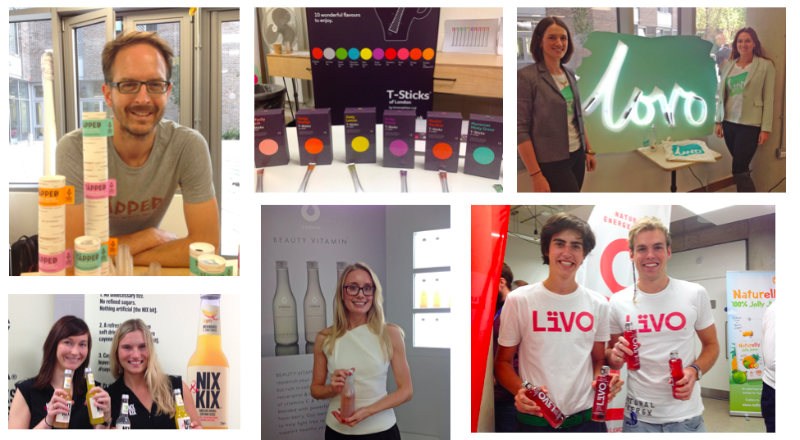Recently I treated myself to a couple of days of trend-spotting. On September 23rd I was a mentor at the ‘drinkpreneur live’ event (a contest in which entrepreneurs compete for the attention and prizes awarded by drinks industry professionals, including some heavy-hitting supermarket buyers).
The following day I decided to visit an exhibition of new food and drink concepts aimed at the dynamic out-of-home/convenience channel, called simply: ‘lunch’. Not surprisingly, a fair proportion of the drinkpreneur contestants were exhibiting their wares here too. So what’s new?
Taking drinkpreneur first, the event is all about discovering ‘the next coconut water’, in the sense that all parties love a shiny new category with good margins. It’s also the kind of innovation that’s often best delivered by entrepreneurs with a unique experience or take on what they and their social group find missing from the world: The legendary ‘market gap’.
Because of this closeness to the market and their total focus on one new idea and one brand, ‘drinkpreneurs’ are more likely than major corporations to come up with something genuinely new and kick-start a category, an opinion that was endorsed by the Tesco and Waitrose buyers present.
Expert presentations in market gap analysis, branding and design, product development, crowdfunding and route to market kicked off the day. This was followed by the retailers’ viewpoint and a really insightful talk from a US-based private equity investor, who’s financed numerous drinks start-ups and identified key success factors. It was fascinating to hear from a hard-nosed financier that we are entering “an era of non-corporate brands”.
So whilst doing your homework and knowing your hero consumer inside-out is a must, it is also necessary to have a ‘Poet’ as CEO, to back your intuition in preference to consumer research, to truly love the liquid in the bottle and to be a creative designer. This last aspect was very much in evidence in the quality of the branding and packaging on display, and the supermarket buyers clearly saw this as the strongest signal of a business that could potentially define and ‘own’ a new category.
In my view the brand name always gives a massive head-start if it is, er, ‘on-brand’. Obscure or product-descriptive names make the challenge tougher.
Innocent famously researched many names of which the most popular was ‘Fast Tractor’, but somehow the founders managed to work out that the name sitting in 14th place was actually the ‘right’ one for their vision. Given the fact that the good names are supposedly all taken, it was a pleasant surprise to see several top notch examples for a brand proposition, from ‘Tapped’ for tree water, to ‘Virtue’ for low sugar iced tea, and ‘Vitness’ for a health and beauty tonic.
When you start with a strong name as a beacon the design codes flow more easily, which was one of the reasons why Tapped was voted overall winner. Its inventors being ex-innocent made me smile, because it signalled a ‘new normal’ in brand creation that has been on the cards ever since those guys changed the rules back in the day. You’ve probably read the books and got the T-shirts, but for a brief reminder see my article for the Drinkpreneur website here.

Some of the new brands that entered the ‘Drinkpreneur’ competition (clockwise from top left): Tapped (the winner), second-placed T-Sticks of London, third-place Lovo (Vodka plus sparkling coconut water), natural energy drink Livo, beauty drink Vitness and cayenne-spiced Nix & Kix.
This story of food & drink innovation continues at ‘lunch’, the exhibition, which will be the subject of a new post soon.
Originally published on LinkedIn.


